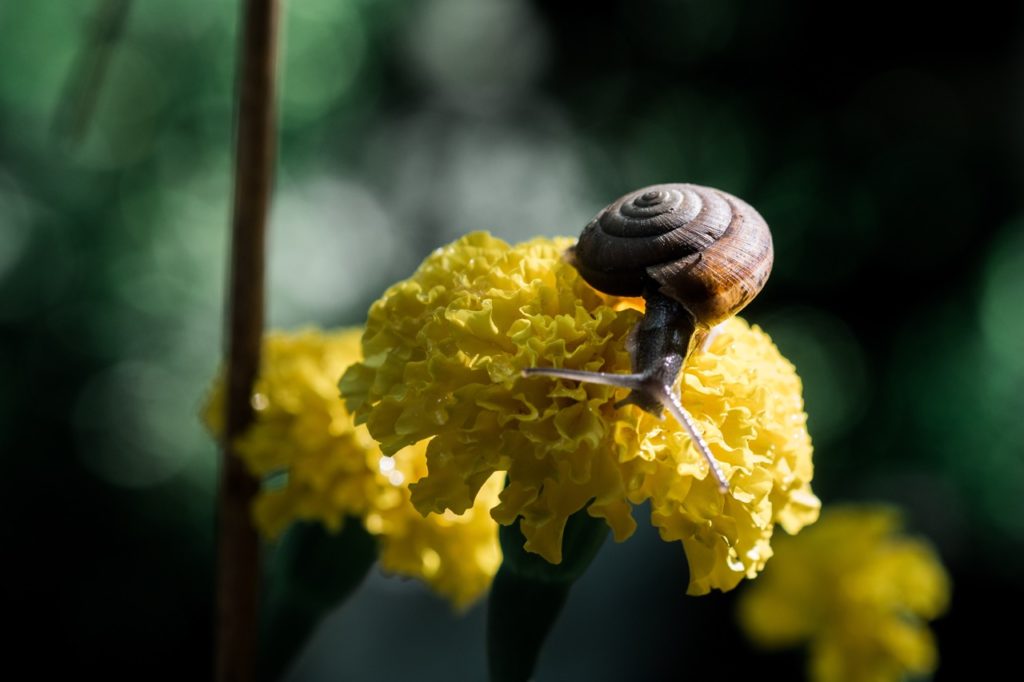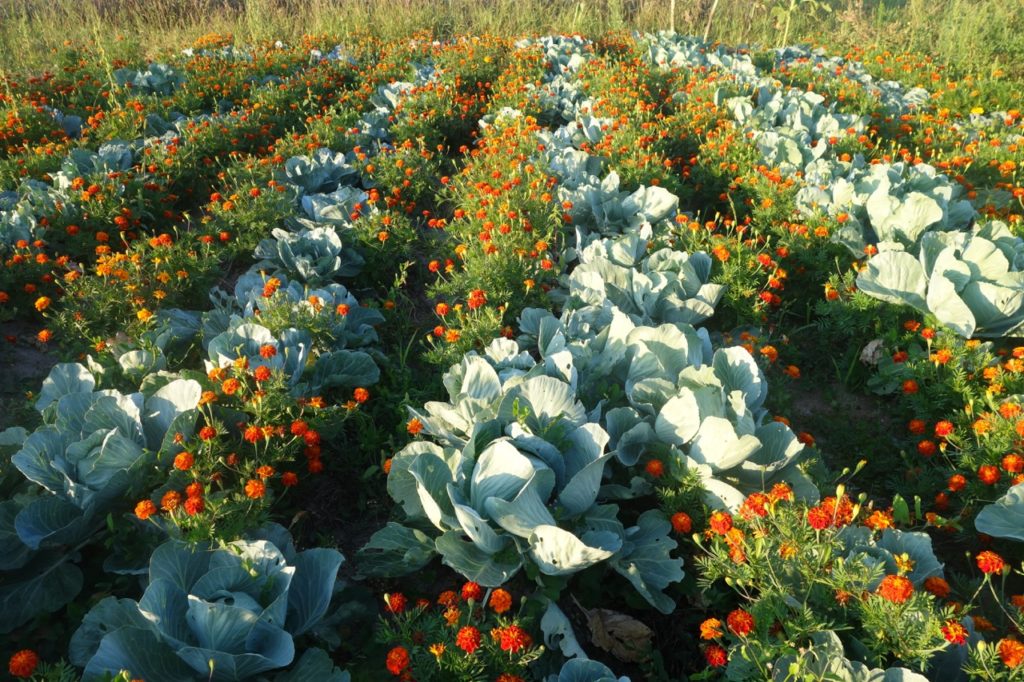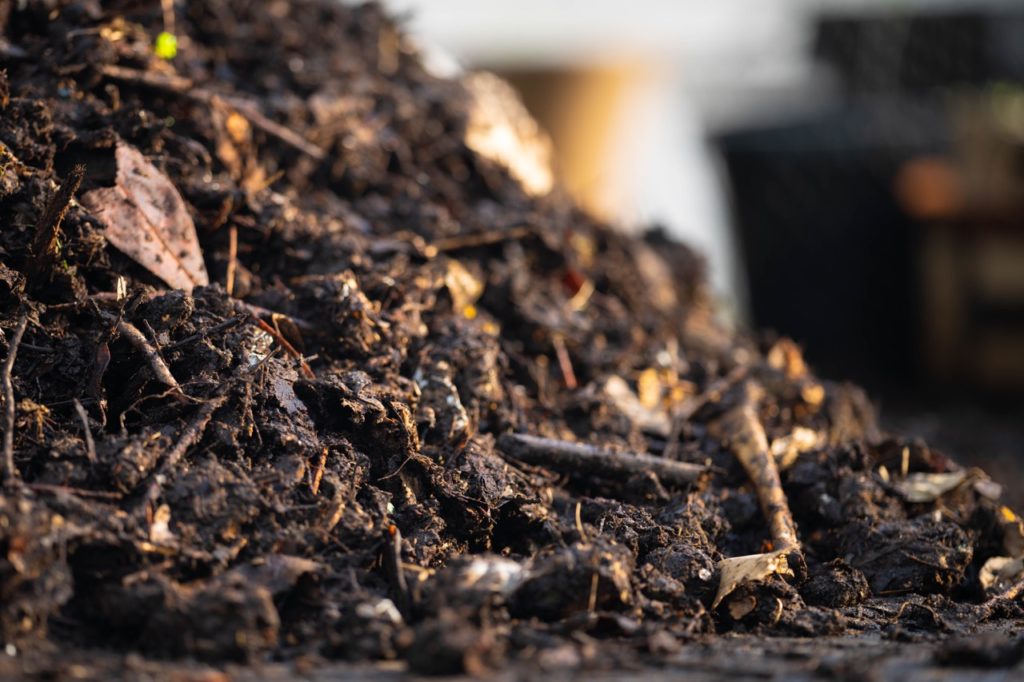Marigolds Make Amazing Companion Plants – Here’s Why You Should Grow Them

ANNUALS > MARIGOLDS > COMPANIONS

Elizabeth is a Permaculture Garden Designer, Sustainability Consultant and Professional Writer, working as an advocate for positive change. She graduated from the University of St. Andrews with an MA in English and Philosophy and obtained a Diploma in Applied Permaculture Design from the Permaculture Association.
Reviewed By PETER LICKORISH

Peter is a Horticulture Lecturer and self-employed Horticulturist, with a passion for diverse areas of the industry - from garden design to the science behind plant growth and propagation. He has completed the Royal Horticultural Society’s Master of Horticulture (MHort) Award and lectures on RHS courses at Bedford College.
Contributions From ANN-MARIE POWELL

Ann-Marie is an award-winning Garden Designer who has worked on private, commercial and charity gardens. Her experience includes work on Grade 1 and 2 listed gardens and Gold-Medal winning show gardens at RHS Chelsea. She was recently featured in Sky Arts show ‘Art Of The Garden'. In 2021, Ann-Marie published her first book, ‘My Real Garden’.
IN THIS GUIDE
MARIGOLDS GUIDES
Companion Planting
Deadheading
Planting
Sowing
Varieties
Tagetes marigolds are attractive flowers which bloom over a relatively long period in the summer garden.
There are several different types to choose from that can be grown as annuals in a UK garden.
One of the great things about them is that they are pretty easy to grow from seed, fairly low-maintenance and, when positioned in the right location, they will readily self-seed and pop up again each year rather than having to be sown anew each spring.
Marigolds, especially certain French marigolds, also make excellent companion plants.
They can be beneficial companions for almost every crop you might grow in your kitchen garden.
Why Marigolds Make Great Companion Plants
French marigolds, Tagetes patula, are commonly planted in vegetable gardens because they are known to be excellent companions for a wide range of crops that are grown alongside them.

The main reasons that marigolds make great companion plants is that they:
- Attract beneficial insects to the space.
- Serve as a trap crop for certain pests.
- Help to repel certain pest species with a secretion of limonene.
- May help to reduce harmful nematodes in the soil.
- Can be used as a chop-and-drop plant to maintain soil health.
- Provide a number of additional yields.
- Create good ground cover without increasing competition too much.
We explain each of these benefits in more detail below.
1) Attracting Beneficial Wildlife
Marigolds bloom over a relatively long period, providing nectar for a wide range of bees, butterflies and other pollinators.
Many marigolds are therefore an excellent flower to draw pollinators into your vegetable garden where they are needed for the pollination of insect-pollinated crops.
“Marigold ‘Burning Embers’ is one of my favourite varieties because the pollinators love it,” shares Ann-Marie Powell, a Garden Designer and TV Personality.
“If you get the pollinators into your veg plot or patch, they will pollinate your vegetable flowers for you so you get higher yields.”

Some insect-pollinated crops in a food-producing garden that could benefit from having marigolds nearby, for this reason, are tomatoes, peppers, squash, courgettes, cucumbers, as well as many fruit trees, cane fruits and berry bushes.
Marigolds also attract insects that prey on pest species, such as ladybirds, hoverflies, lacewings and parasitic wasps.
These keep down populations of aphids and can keep an ecosystem balanced so you don’t experience too much damage to your crops.
This means that any crops bothered by aphids or other insect pests eaten by these predatory insects could benefit from having marigolds growing close by.
2) Trap Crop
Marigolds can also potentially be used as a trap crop for several pest species.
Trap crops attract the attention of pests, thereby keeping them off more valuable crop species in your garden.

Marigolds can, in particular, be a beneficial trap crop for slugs.
When placed around the edge of a kitchen garden bed as a sacrificial trap crop, they will draw slugs to them.
Though some plants may be lost, you can collect slugs up before they threaten your other plants (if they are not picked off by other wildlife you should be attracting to your space).
“Fascinatingly, chemicals exuded by the roots of Tagetes minuta have been shown to repel weeds such as couch grass and bindweed,” adds Master Horticulturist Peter Lickorish.
3) Pest Repellent
French marigolds may also repel certain pest species.
There is some evidence that suggests, for example, that they may help, at least partially, to keep cabbage moths away.

Studies have also shown that the limonene they excrete can help somewhat in repelling whiteflies from the area.1How the humble marigold outsmarts a devastating tomato pest. (2019, March 1). Newcastle University: Press Office. Retrieved March 21, 2023, from https://www.ncl.ac.uk/press/articles/archive/2019/03/whiteflieslimonene/
So, marigolds may be a beneficial companion for brassica (cabbage family crops) and any plants bothered by whiteflies for these reasons.
4) Reduce Nematodes
One other way that marigolds are said to be useful as a companion plant is due to their ability to kill off nematodes in the soil that can pose a problem for crops.
There are both beneficial and detrimental nematodes in garden soil.
These are tiny, thread-like organisms and there are many nematodes that we need – and many that may become a problem for home growers.
Marigolds produce compounds known as nematicides in their roots, but things are not quite as simple and clean-cut as some people believe.2Kruger, R., Dover, K., McSorley, R., & Wang, K. (2019, December 2). Marigolds (Tagetes spp.) for Nematode Management. University of Florida. Retrieved March 21, 2023, from https://edis.ifas.ufl.edu/publication/NG045

When certain nematodes attack certain French marigolds, they are killed off in that specific location and see a reduction in their numbers, but we cannot usually determine which nematodes we have in our soil, nor whether the marigolds we grow will truly be effective against them.
Marigolds might also excrete a chemical that can repel nematodes in the surrounding area, though scientific consensus is lacking at present on whether or not this is the case.
The science is currently inconclusive about whether companion planting with marigolds can help with nematode issues for nearby plants.

What we do know, however, is that plants that follow marigolds immediately after them in rotation are less likely to be struck by nematode problems (such as root rot), especially when the marigolds’ roots are left in the ground after they have been growing in a particular area for 3-4 months.
Certain varieties produce more of the nematicides and therefore can be more effective where this is a concern.
They work best when planted closely spaced in a block.
5) Chopped & Dropped
There is some evidence to suggest that marigolds chopped and dropped on the surface of the soil when the growing season comes to an end may also help with nematode issues.

Dead plant matter won’t kill nematodes, but can promote healthy populations of soil biota that can help keep harmful nematode numbers lower overall.
Also, since marigolds laid as mulch on the soil improve the soil health, this is also of benefit more broadly for a wide range of crops and other plants.
6) Additional Yields
Marigolds also provide us with additional yields, which is another reason why they make a good companion plant to include in your vegetable gardens.

Not only are they beneficial for other crops, they can also provide us with edible petals that can be used as a garnish.
Scented French marigolds yield an essential oil that is used in perfumery and many types make wonderful cut flowers for home displays.
7) Ground Cover
Marigolds also make good almost universal companion plants in a vegetable garden because when planted between or around other crops, they cover the soil, protecting it, conserving moisture and suppressing weeds.
In doing so, they don’t take up too much water or nutrients that could affect the growth of other plants growing close by.
They are not heavy feeders, so won’t introduce too much competition into your growing areas.

Of course, you always still have to take sunlight, water and space requirements into account when planning where to put marigolds.
As you can see from the above, marigolds can be a near-universal companion plant for your kitchen garden, so it is a great idea to grow them in a number of different polyculture combinations.
Just make sure that your marigolds still get plenty of sun through the summer and they should thrive, helping other nearby plants to do the same.
References
- 1How the humble marigold outsmarts a devastating tomato pest. (2019, March 1). Newcastle University: Press Office. Retrieved March 21, 2023, from https://www.ncl.ac.uk/press/articles/archive/2019/03/whiteflieslimonene/
- 2Kruger, R., Dover, K., McSorley, R., & Wang, K. (2019, December 2). Marigolds (Tagetes spp.) for Nematode Management. University of Florida. Retrieved March 21, 2023, from https://edis.ifas.ufl.edu/publication/NG045
